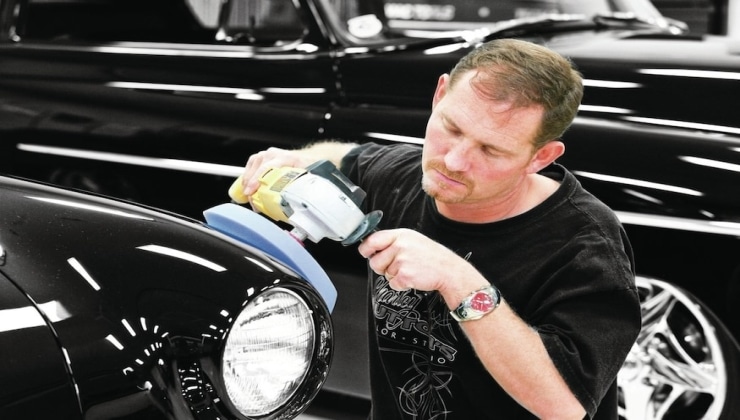A Buyer’s Guide: How to Spot Repainted Cars in the USA

One of the most important factors that tell us about the genuine condition of a car is its paint. When buying a second-hand vehicle, you need to ensure that the car’s paint is in original condition. If the vehicle is repainted, then its market value can decrease.
The market value of a car is based on the condition of its paint because there is a common conception among people that if a vehicle is repainted, then it may have undergone some accident in the past.
Any good auto repair shop can provide reliable paint services to retain the aesthetics of the car. However, some tricks can help you identify if the vehicle you are about to buy has genuine factory paint or if retouches are done afterward.
A repainted car should not be crossed from your purchasing list. You can still buy a car whose paint is not in genuine condition, but you must ensure at what points on the car’s body retouches are done.
If you are not an expert on cars and it’s your first time buying a used car, don’t worry. Here, we will discuss some common tricks that can help you determine if your car is repainted.
How to Know If The Car is Repainted
Check the Paint Quality
Generally, the original factory paint should be even in texture all over the car. Feel various areas using your hand and look for rough spots, cracks, and bumpy surfaces.
It is vital to compare the colors of various panels. Check the car’s color in natural light from different sides to detect any mismatch.
Repainted cars can occasionally show some color shifts because these are aged properties and are subject to different conditions like exposure to sunlight or even applying these paints differently. Nevertheless, there should be a reason to worry in case of important color divergences.
Similarly, a close examination of the paint’s reflectiveness can also give much information. View the surface in different positions by turning around and checking how light shines back on it from different angles.
Differing levels of shininess or inconsistencies on reflective surfaces could be indicators of an inconsistency between original and fake.
Check for Oversprays
Overspray checking determines if a car was resprayed. Overspray happens when paint specks flow out of the target place during application, creating visible indicators on surfaces that generally get painted.
Start with those parts in the car that are usually not spray-painted after the production. Such items include rubber seals, window trim, door handles, and mirrors, among many other non-painted components.
The overspray might not be uniform, meaning there would be unevenness in the thickness of the paint over the unpainted surfaces. This is an overspray indication, and you should carefully inspect such places for uneven coatings.
Sometimes, overspray can result as a consequence of bad masking when repainting.
Masking refers to the covering of spaces over which painting is not desired. Look around edges and adjacent surfaces for indications of bad masking, like obvious lines or over-sprout bleeding.
If you want expert guidance on checking if the car is repainted, you can search for an ‘auto repair shop near me’ and get their services.
Use a Paint Thickness Gauge
An electronic paint thickness checker is a difficult but helpful way to determine if your vehicle has been refurbished. The paint thickness gauge is used to determine the paint depth on different surfaces to identify any repaints.
Start with taking measurements on different parts of the car that are most unlikely to be repaired or repainted, like the roof and broader panels.
By using these readings, the reference thickness of the original factory paint can be established.
Put the car paint thickness gauge on the doors, hood, fenders, and trunk panels. Ensure you take measurements at various points across every panel to get the correct figures.
Look at any difference between them compared to the original reading, which includes comparing the values of the first, second, and third peaks.
If there are inconsistencies in the paint thickness, it could mean that there was previous body work or repainting.
Minor variations among panels should be normal as they result in factory deviations. However, significant variations among panels might imply that those sections of the car had been re-painted.
When evaluating a second-hand vehicle, which may reveal that it was once in an accident, it is critical to look at the gaps between body panels. The uneven spaces might indicate a structure with some previous collisions.
The gaps for body panels in a well assembled car are regular in every segment. Take note of the gaps between the hood, fenders, door, and trunk.
The gaps should be uniform and should not differ much from each other. If they appear irregular, then this might also mean that they have been replaced at some point.






